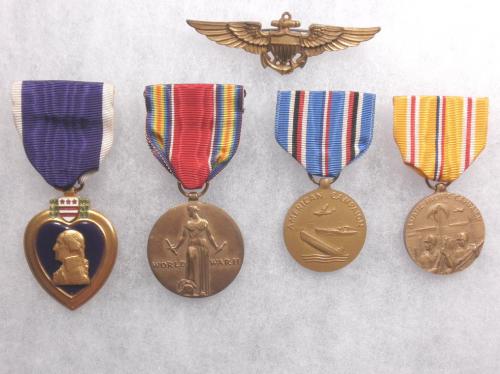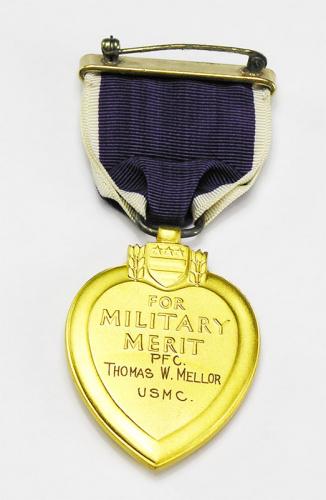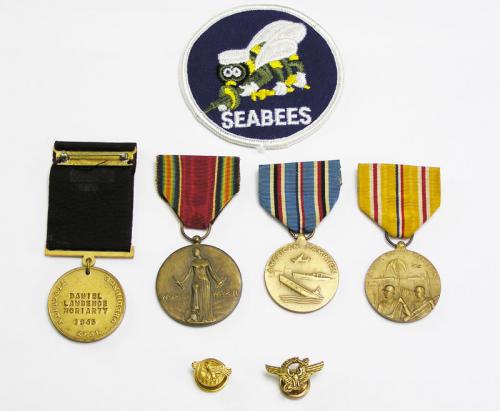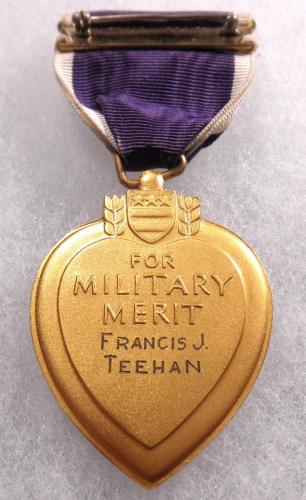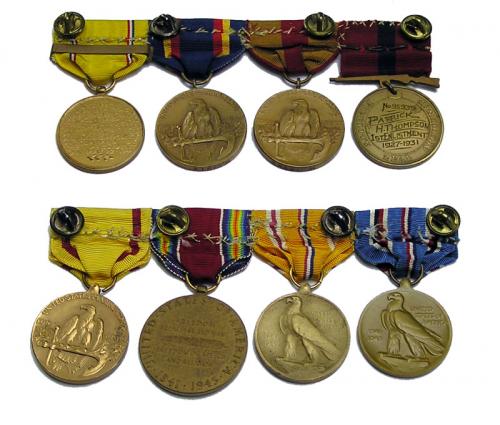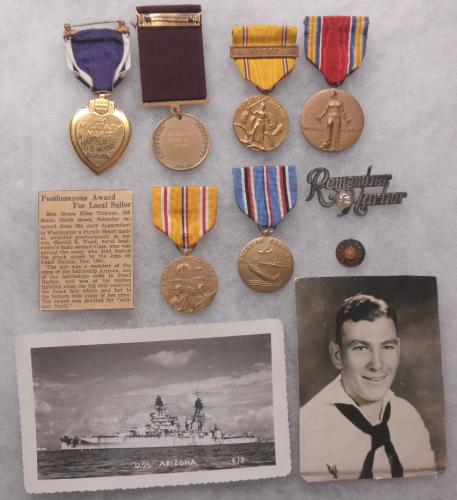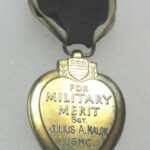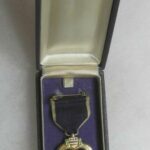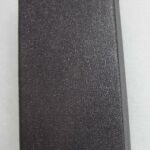Julius Anthony Malok was born in Pittsburgh June 24, 1917 to Imre and Katherine Malok. He enlisted in the Marines January 26, 1942. He trained at Camp Pendleton. He was then assigned to the 5th Marine Regiment, 1st Marine Division, and about July of 1943 was reassigned to the 23rd Marine Regiment, 4th Marine Division.
Sergeant Julius Malok, a regular Marine, was killed on Tinian on D-Day July 24, 1944. Malok had participated in Guadalcanal, Roi-Namur, and Saipan. Malok was first buried in Plot 1 Row 1 Grave 23 of the 4th Marine Division cemetery on Tinian. He is also memorialized at the American Memorial Park in Saipan, Northern Mariana Islands. Internet data shows that he was reinterred in the Calvary Cemetery in Pittsburgh Pennsylvania after the war.
Sgt. Malok's group includes his officially engraved Type 1 Purple Heart with the small purple box as issued by the US Mint.
On the morning of 24 July 1944 two Marine divisions, the 2nd and 4th, commanded by Marine Major General Harry Schmidt landed on Tinian, opposed by 9,162 Japanese. 415 amphibious vehicles were used to bring the troops ashore. A diversionary feint landing at Tinian Town fooled the Japanese and split their forces while the Marines actually came ashore in mass at White Beach. Against light opposition, the Marines established a beachhead two miles wide and a mile deep by the end of the first day. A Japanese counterattack failed, costing them 1,241 men in an attempt to push the Marines off the beach.
Tinian's unusually flat, rolling terrain was favorable to a rapid advance by infantry and tanks, and the disorganized Japanese did not manage to solidify a defense line. Gains continued, including capture of Mt. Lasso, the islands highest point, until the arrival of a typhoon on 29 July disrupted the advance and stopped supplies coming from Saipan for a few days.
During the night of 31 July, with only the southern tip of Tinian still controlled by the Japanese, their survivors mounted a suicidal counterattack. The Japanese rushed the Marine lines three times during the night but did not break through. At dawn over one hundred enemy dead were discovered. On the evening of 1 August, General Schmidt declared the island secure. 542 more Japanese soldiers were flushed out of hiding on Tinian by the end of 1944.
The relatively mild nine-day battle for Tinian cost the Marine Corps infantry and Army artillery units 328 killed and 1,571 wounded. Of that number, 212 Marines of the 4th Division lost their lives. The island proved to be the best air base in the Pacific and soon B-29s commenced raids of the Japanese home islands from new airstrips on Tinian. In August of 1945, the B-29s of the 509th Composite Group that dropped atomic bombs on Hiroshima and Nagasaki were based at North Field on Tinian.
A detailed narrative of the Marine landings at Tinian can be found at: http://www.nps.gov/history/history/online_books/npswapa/extContent/usmc/pcn-190-003127-00/sec2.htm

